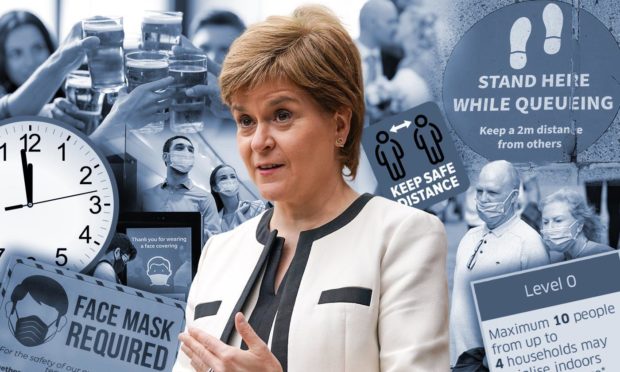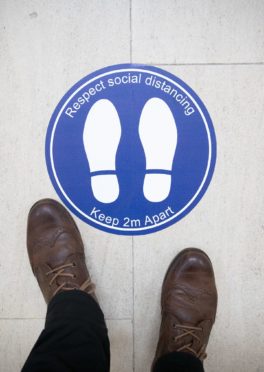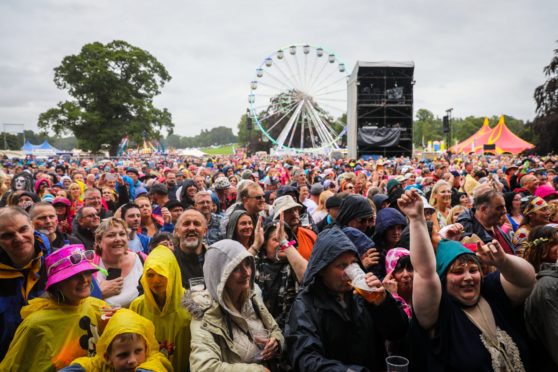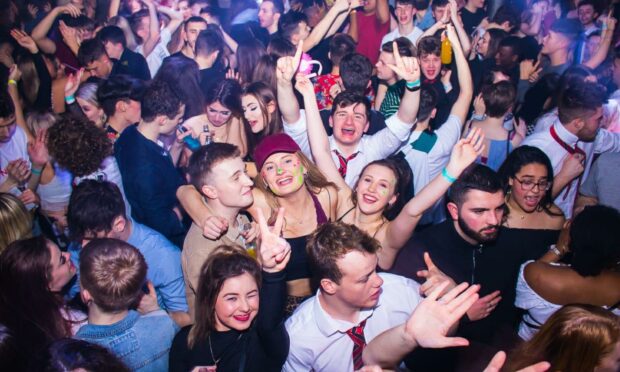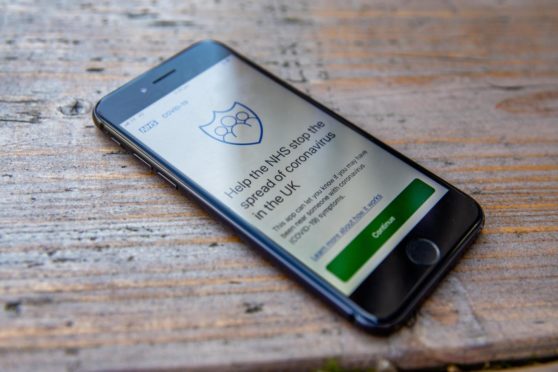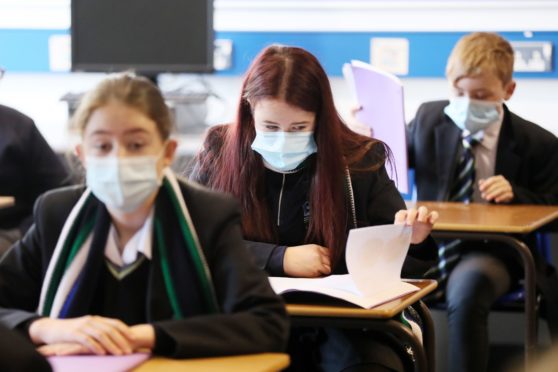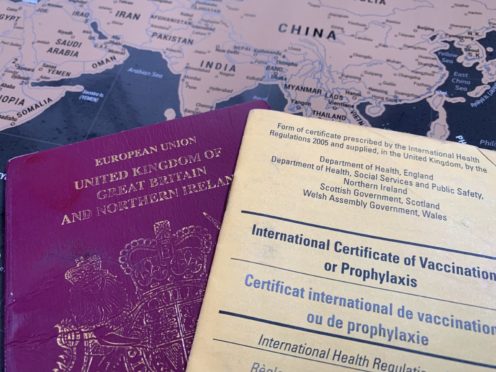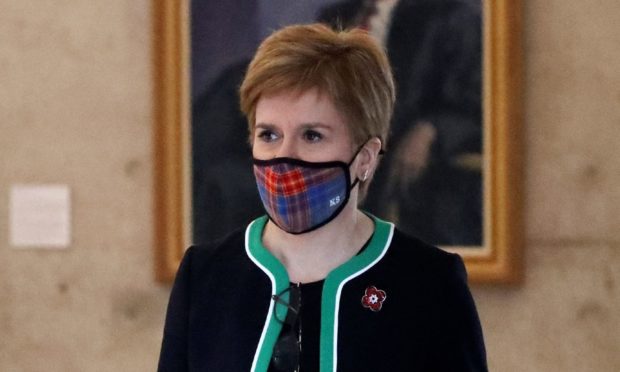Today’s virtual meeting of the Scottish Parliament included the much-anticipated announcement of Covid restriction changes by First Minister Nicola Sturgeon.
The changes, billed as ‘the move beyond Level 0’, will come into effect from Monday, and will represent the most significant return to normal life since restrictions were first introduced in spring last year.
Speculation about what the new guidance would look like was rife before this afternoon, with people wondering to what extent it would offer a true break from the rules that have governed our lives for the last 17 months.
Below are the seven main points – along with some of the nuance and exemptions that were mentioned too.
- No legal requirement for physical distancing
The lines on the floors and signs on the walls telling people to stay at least two metres apart while queuing in shops and bars will be a thing of the past from Monday, as the physical distancing law is scrapped.
The first minister also confirmed today that this meant ferries to the Scottish islands would no longer have to operate at 30% capacity – news that the Western Isles MSP Alasdair Allan described as a “huge relief”.
However, in her statement Ms Sturgeon added: “Even though the law will not stipulate physical distancing from Monday, we will continue to advise the public that – especially indoors – keeping a safe distance from people in other households and avoiding crowded places will minimise risk.”
- No legal limit on the size of gatherings
This change will come as a relief to anyone who has frantically tried to work out how many households are attending a party, and whether they should be meeting indoors or outdoors – the easing applies to both.
There is another asterisk with this one though – organisers of outdoor events with more than 5,000 people and indoor events of more than 2,000 people will need to apply for permission.
The first minister said: “This will allow us and local authorities simply to be assured of the arrangements in place to reduce the risk of large scale gatherings.”
While this sounds like permission is more likely to be granted than not, the official news release from the Scottish Government sounds more cautious, saying exceptions to these “capacity limits”, “may be possible on a case by case basis”.
- No venues legally required to close
Although Nicola Sturgeon did not mention nightclubs explicitly in her statement today, that is what many people heard when she announced that all venues will be able to open from Monday.
The news has been welcomed by club owners across the country, who will finally be able to welcome back paying customers after around 500 days of closure.
- No automatic requirement for close contacts to self-isolate
With the ‘pingdemic’ making headlines in recent days, it is maybe not surprising that one of the main points the first minister announced today set out to reduce the number of people who are required to self-isolate.
However, to avoid the mandatory ten days of isolation, adults who are identified as close contacts of Covid cases must be at least two weeks past their second dose of the vaccine and without any symptoms. They must also return a negative PCR test.
These same conditions apply to anyone aged between five and 17, even if they have not been vaccinated, and children under five will not need to take a PCR test.
- Fewer young people will have to self-isolate due to cases in schools
The blanket isolation of entire classes in schools, which has caused a significant amount of disruption to pupils around the country, will no longer happen from Monday.
Instead a more targeted approach will be adopted, with fewer students having to self-isolate, and most of those who do will do it for a much shorter period of time.
To “support a safe and sustainable return to education” after the summer, though, most mitigation measures will remain in place for the first six weeks of the new school year – that means face coverings for over-12s and staff, as well as one-metre distancing.
- Possible introduction of vaccine certificates
The first minister trod quite carefully around this topic in her statement, saying only that an app is being developed to make access to Covid status certificates easier for use in international travel.
The app, which will be launched next month, could be used in “domestic settings” should the government decide it was appropriate, she said.
However, she added: “I want to assure Parliament that we do not underestimate the ethical, equity and human rights issues associated with Covid status certification, and we will keep members updated and consulted on our thinking on this issue.”
- Other measures – including face coverings and home working – to stay
The announcement of Covid restriction changes today did not mean the wholesale scrapping of every mitigation measure.
Nicola Sturgeon made a point of listing the guidance that would continue to be issued – in clear contrast to the ‘Freedom Day’ rhetoric used last month in England.
Subject to exceptions, it will still be a legal requirement to wear face coverings in indoor public places and on public transport, and the government is continuing to advise home working where possible.
Indoor hospitality will still need to take down details for customers to help Test & Protect with contact tracing of positive cases, and travel restrictions may be used in the future “to restrict the spread of outbreaks and protect against the risk of importation of new variants”.
